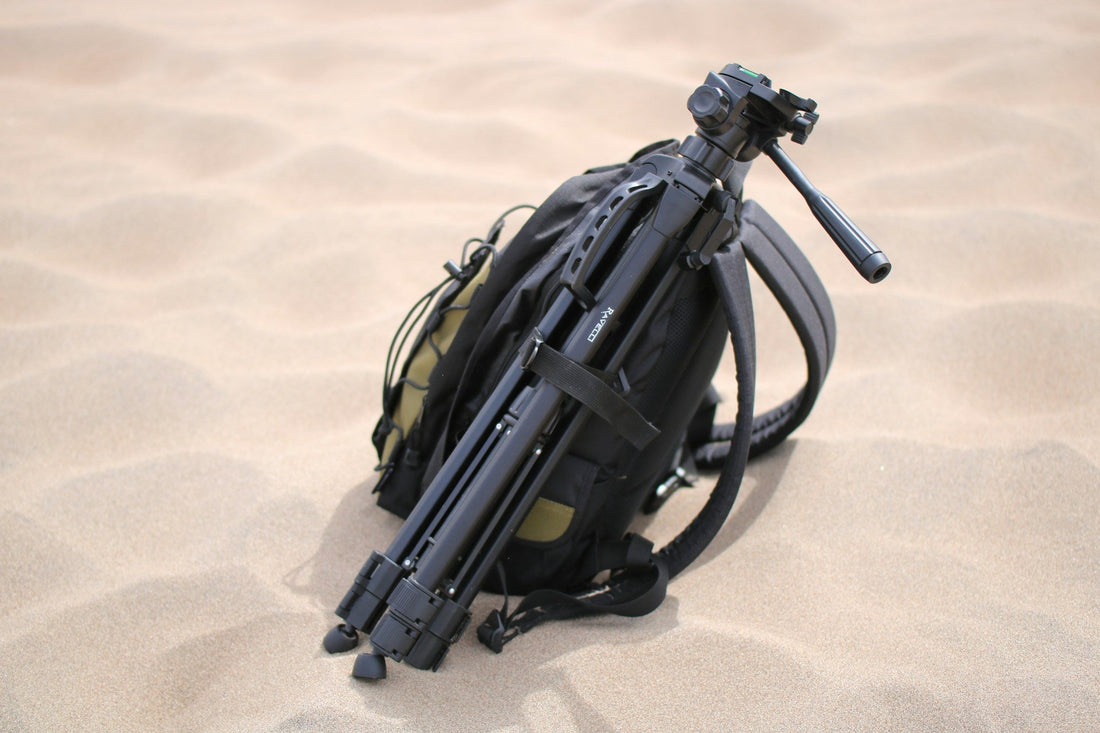
What to Look for When Choosing a Tall Tripod for Outdoor Photography
Outdoor photography can take you to some breathtaking places—open fields, forest overlooks, mountain ridges, or even quiet beaches at sunrise. But getting a perfect shot in these scenic spots isn't only about the camera. A good tripod plays a big part in keeping your shots steady and sharp. The right one lets you set up quickly, control the frame with ease, and handle unexpected changes in the weather or terrain.
One feature many outdoor photographers are now looking for is a tripod with extra height. That added reach opens up fresh angles, whether you're trying to shoot over a crowd, capture a tall structure in full frame, or get a clean view with fewer distractions in the background. Shooting from higher up can really change the depth and movement of a photo, making it more powerful and more accurate to the moment.
Stability And Durability In Harsh Conditions
When you're out in the field, it doesn’t take much to throw off a steady shot, especially on windy days or when you're working on uneven ground. A stable tripod helps prevent camera shake and gives you sharper images, even during longer exposures. But not all tripods are built to hold up equally when things get tough.
Some things to look at when judging stability and durability include:
- Leg locking mechanism: Tripods with strong, reliable locks, such as twist or lever locks, allow you to secure each leg section with confidence.
- Weight distribution: Heavier tripods may offer more stability but can be harder to carry. Lightweight options made from carbon fiber strike a better balance by being both strong and easier to transport.
- Feet design: Non-slip rubber feet or adjustable spiked feet help keep your tripod planted, especially on slippery rocks, sand, or soft soil.
It’s also a good idea to test how well the tripod resists vibrations from wind or nearby movement. A little flex in the legs or center column can ruin a long exposure. Lightly tapping the legs while it's set up can help you detect instability—if it rattles, it may not be best for rugged outdoor shoots. For landscape photographers headed into remote or rough areas, choosing sturdy gear from the beginning helps avoid wasted time and trouble later.
Height And Adjustability
A tripod with extra height for photographers isn't just a cool feature—it can shape how you tell a visual story. That added elevation gives you more choices when framing your shots, especially during events, real estate shoots, or when working on uneven ground. Elevated views help capture full scenes, create clean compositions, and avoid background distractions.
Height is only useful when it's easy to manage, so adjustability plays a big role here. Some things to look for include:
- Multi-sectioned legs that extend quickly
- A center column that rises without tipping the tripod
- Legs that adjust to wide or tight angles for rugged terrain
These features help save effort and setup time. For example, a real estate photographer working with wide lots or sloped backyards will benefit from being able to raise the camera several feet higher without using unstable platforms. That change in angle makes properties look more complete and balanced in each frame.
A well-designed tall tripod won't just help once in a while—it becomes a key piece of gear. Height options allow for more steady wide-angle shots or overhead views, while adjustability makes it easier for the tripod to work in more places with fewer adjustments. Whether framing large buildings or planning tight group shots, a tripod that can stretch and balance well gives photographers a lot more control.
Portability And Ease Of Use
Outdoor photography often means hauling gear over long paths or through rough terrain, so a tall tripod must travel well. If it’s too bulky or awkward to carry, it’s less likely to come along for the shoot.
Smarter tripod designs now offer a better mix of height and portability. For instance, carbon fiber versions weigh less than aluminum while still being strong enough for uneven ground or breezy weather. A tripod that folds down smaller is easier to carry in a backpack or car trunk.
Features to look for when evaluating portability:
- Compact folded length for easier packing
- Quick-open leg sections
- Center column that extends without extra tools
- Padded grips or foam for comfort in cold or wet conditions
Even small design features go a long way. Leg locks you can open with gloves, handle grips for quick repositioning, or a tripod bag that doesn’t bunch up in awkward ways can all help in the field. Think of a wedding photographer switching venues on a tight schedule—every second of setup saved means more moments captured. With smoother setup and a thoughtful layout, your equipment won’t slow you down.
Ease of use matters just as much. Some tripods feel like they’re working against you, with clunky parts or stiff joints. Others operate so smoothly you barely think about them while adjusting. Choosing one that moves well makes it easier to get the right shot when timing matters.
Additional Features That Improve Your Workflow
Sometimes the small details make the biggest difference. Once you've figured out height, weight, and portability, it helps to pick a tripod with features that support your shooting style.
Helpful extras include:
- Quick-release plates for fast camera attachment and swaps
- Bubble levels to keep shots straight when you're rushing or working on a slope
- Retractable spikes for better grip outdoors without ruining indoor floors
Other useful ideas: a hook under the center column lets you hang a weight for added stability, especially during windy weather. Built-in cable clips can help manage accessories on video shoots or monitor setups, avoiding tripping hazards or messy cables.
Photographers dealing with busy or uneven environments—such as festivals, farmland, or city streets—will appreciate features that make setup and repositioning fast and smooth. Some models even let the center column rotate or add other camera mounts, giving you more shooting angles without needing extra gear.
It all adds up to better workflow. Adjustable legs, quick-change plates, stronger grips—these elements help you move faster and react without interrupting your shoot. Useful design touches like these can turn a regular tripod into a workhorse that earns a permanent spot in your kit.
Finding The Perfect Balance For Outdoor Photography
Choosing a tripod isn't about getting the tallest or lightest one—it’s about finding what helps you work best. Too heavy, and it stays in the trunk. Too light, and it might wiggle at the wrong time. The key is figuring out what fits your shooting habits.
Think about the places where you'll be using it:
- Are you hiking to scout landscapes?
- Covering property footage or buildings?
- Holding classes or workshops that need a steady, higher view?
Each goal brings different tripod needs. Landscapers may focus on stability for long exposures at sunrise. Construction photographers might prioritize reach across wide spaces. In busy areas, setup speed and portability might top the list.
Make a checklist that fits your workflow:
- What kind of ground do you normally shoot on?
- Do you need quick setup for limited-time shots?
- Do you adjust height often across a single shoot?
- Will weather or wind be major concerns?
- What camera plates or head types do you usually use?
It’s worth taking time to get this right. A tall tripod with real adjustability and strong build quality can make every shoot smoother—whether that’s filming school activities in a campus courtyard or tracking job site progress from an elevated spot. Reliable equipment should support your work without slowing you down. The small improvements, like fast locks or extra mounts, help you adapt fast and stay focused on getting the shot. With the right gear, outdoor photography becomes easier, more stable, and more enjoyable.
When you're ready to elevate your photography game with gear that performs across locations and lighting conditions, Hi Rise Camera has you covered. Our lineup is built for versatility and durability, helping you frame shots with precision no matter where you shoot. Explore our latest options, including a tripod with extra height for photographers, and see how the right setup can transform your outdoor captures.

